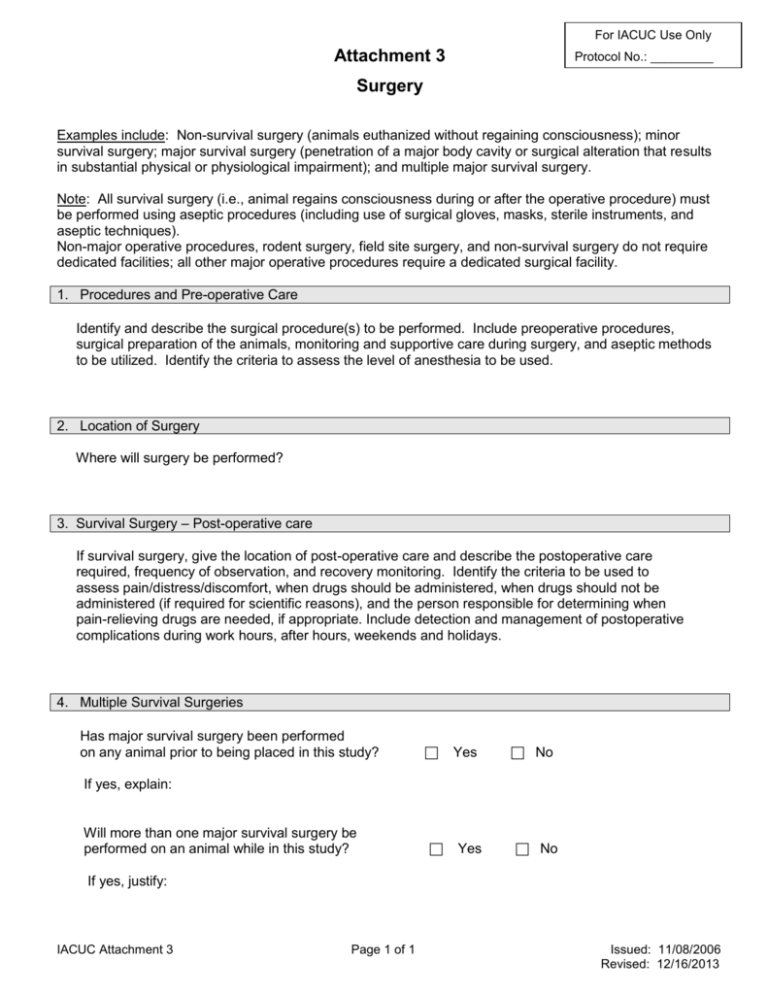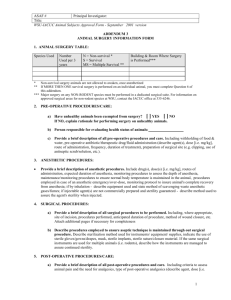Surgery
advertisement

For IACUC Use Only Attachment 3 Protocol No.: _________ Surgery Examples include: Non-survival surgery (animals euthanized without regaining consciousness); minor survival surgery; major survival surgery (penetration of a major body cavity or surgical alteration that results in substantial physical or physiological impairment); and multiple major survival surgery. Note: All survival surgery (i.e., animal regains consciousness during or after the operative procedure) must be performed using aseptic procedures (including use of surgical gloves, masks, sterile instruments, and aseptic techniques). Non-major operative procedures, rodent surgery, field site surgery, and non-survival surgery do not require dedicated facilities; all other major operative procedures require a dedicated surgical facility. 1. Procedures and Pre-operative Care Identify and describe the surgical procedure(s) to be performed. Include preoperative procedures, surgical preparation of the animals, monitoring and supportive care during surgery, and aseptic methods to be utilized. Identify the criteria to assess the level of anesthesia to be used. 2. Location of Surgery Where will surgery be performed? 3. Survival Surgery – Post-operative care If survival surgery, give the location of post-operative care and describe the postoperative care required, frequency of observation, and recovery monitoring. Identify the criteria to be used to assess pain/distress/discomfort, when drugs should be administered, when drugs should not be administered (if required for scientific reasons), and the person responsible for determining when pain-relieving drugs are needed, if appropriate. Include detection and management of postoperative complications during work hours, after hours, weekends and holidays. 4. Multiple Survival Surgeries Has major survival surgery been performed on any animal prior to being placed in this study? Yes No If yes, explain: Will more than one major survival surgery be performed on an animal while in this study? Yes No If yes, justify: IACUC Attachment 3 Page 1 of 1 Issued: 11/08/2006 Revised: 12/16/2013








